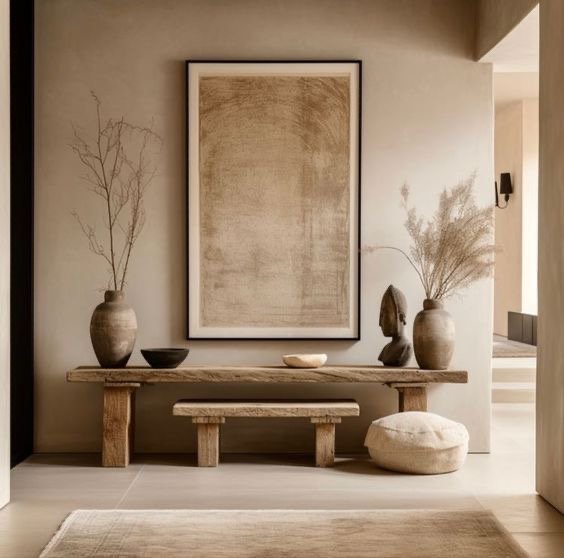Over recent years, the prominence of Japandi style in online discussions has piqued curiosity. This seemingly unfamiliar term holds substantial links to both Nordic and Japanese design sensibilities. What’s fascinating is how it incorporates elements from various philosophies like Wabi-Sabi’s appreciation for imperfection, Denmark’s Hygge emphasis on coziness and comfort, and Sweden’s Lagom advocating for balance. As enthusiasts delve deeper into the world of interior design, the discourse surrounding Japandi continues to expand, merging these diverse influences into a cohesive yet unique aesthetic.
Japandi isn’t just about blending two different cultures; it’s about achieving harmony between them. This fusion results in a visual narrative that emphasizes clean lines, natural materials, muted color palettes, and functionality. The understated elegance and tranquil ambiance it creates have captivated design aficionados worldwide, prompting a quest for a deeper understanding of what Japandi truly represents and how it reshapes contemporary interior design landscapes.
Table of Contents
Unveiling the Japandi Influence: Bridging Japanese and Nordic Design in Contemporary Interiors
Previously, we explored the essence of Japanese Wabi-Sabi design and its impact on modern living spaces. However, in the realm of interior design, the growing prominence of Japandi style is hard to ignore. This evolving trend seamlessly merges elements from Japanese and Nordic cultures, fostering a space that embraces minimalist living and reductionist design concepts.
Japandi isn’t just a fusion of East and West aesthetics; it embodies the cultural virtues of both, facilitating the practical integration of minimalist lifestyles and streamlined design principles. By marrying the precision of Japanese minimalism with the cozy appeal of Nordic design, Japandi crafts spaces that are both inviting and sophisticated, resonating with a diverse global audience. Its allure lies in the ability to blend disparate design philosophies, offering a pathway to a more harmonious and elegant way of living.
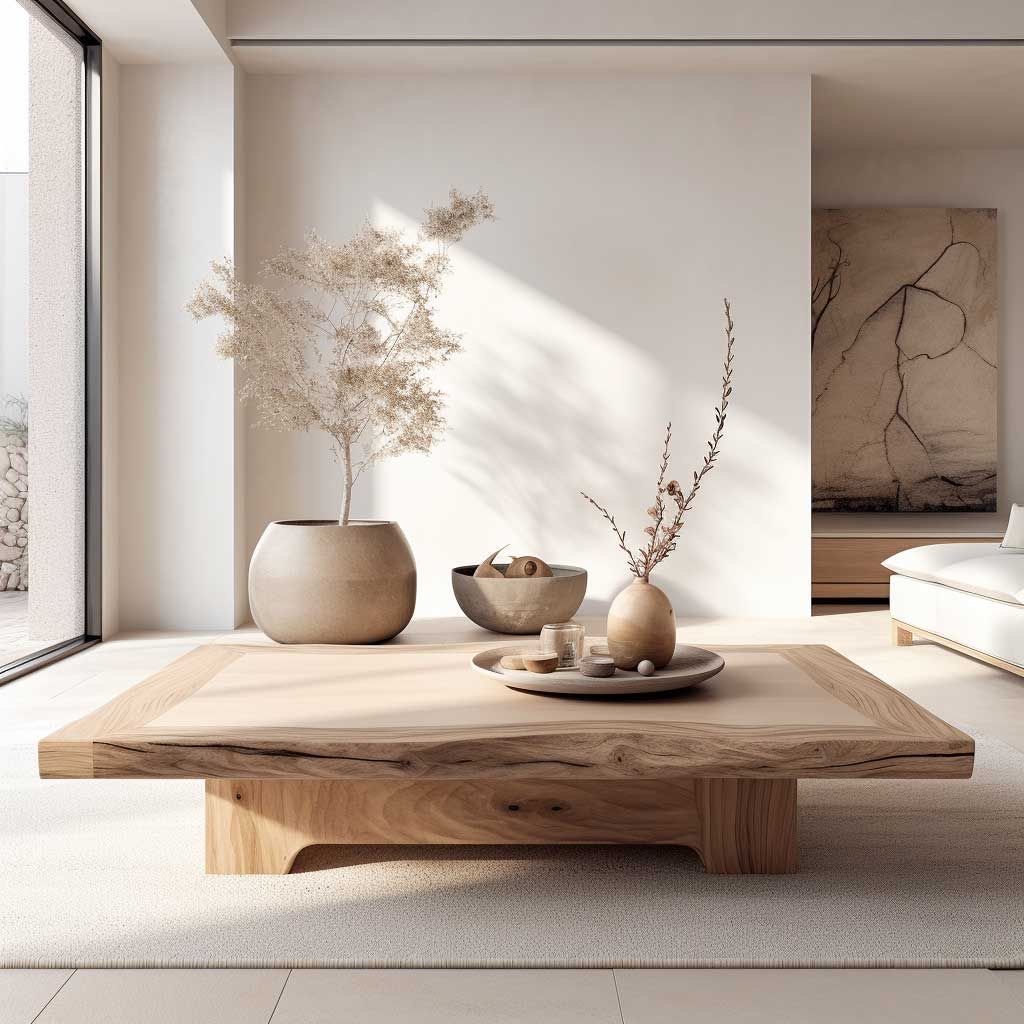
Distinguishing Japandi from Wabi-Sabi: What Sets Them Apart?
At first glance, deciphering Japandi might pose a challenge, but a closer inspection unveils its unique fusion of Japanese and Scandinavian design philosophies. Japandi harmonizes the minimalist serenity of Japanese style with the functional pragmatism of Scandinavian design. With a shared foundation in natural materials, it weaves these elements into a distinctive interior design ethos, often interpreted as the Japanese-Nordic fusion.
Expanding on this, the distinct appeal of Japandi style lies in its ability to bridge the elegance of Japanese minimalism with the functional warmth of Scandinavian design. In contrast to the pure pursuit of Wabi-Sabi’s ‘imperfect beauty’ rooted in nature, Japandi crafts a balanced blend that exudes both coziness and sophistication without losing the tranquil healing essence synonymous with Japanese Wabi-Sabi.
What sets Japandi apart is its accessibility and adaptability within interior design landscapes. Its inclusive nature transcends the confines of high-end residences, making it a versatile and all-encompassing lifestyle aesthetic suitable for a variety of spaces, regardless of their size or scale.
The evolution of Japandi has been deeply influenced by the lifestyle principles flourishing in Nordic countries. Concepts like the Danish philosophy of ‘Hygge,’ emphasizing comfort, joy, and the art of coziness in daily life, and the Swedish ethos of ‘Lagom,’ advocating for balance and ‘just enough,’ have left an indelible mark on Nordic aesthetics. These principles have seamlessly merged with Japandi, infusing it with a broader spectrum of design variations and functional adaptability.
The culmination of these influences allows Japandi to offer a diverse range of stylistic expressions, accommodating various design preferences while maintaining its core essence of harmonious fusion between cultures, making it a versatile and universally appealing interior design style.
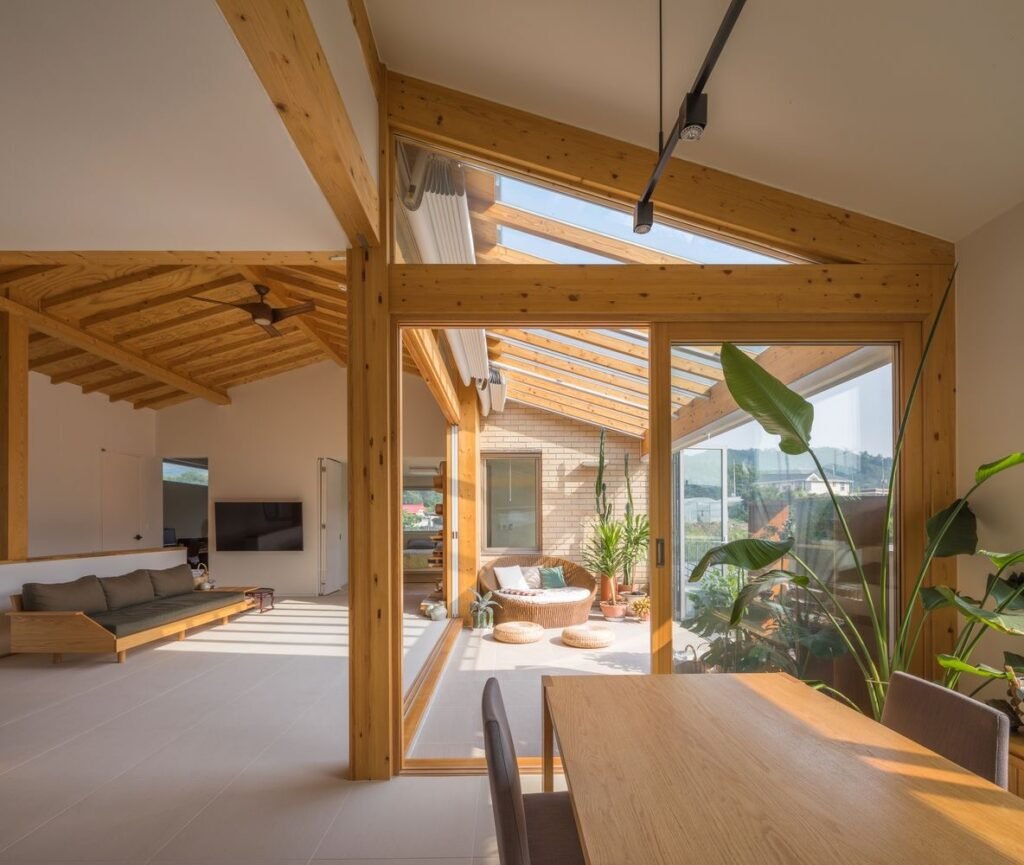
Designing Paint Color Schemes in Japandi Style: The Essence of Japanese-Nordic Fusion
In the realm of Japandi interior design, the choice of paint colors serves as a pivotal element in establishing the serene and harmonious atmosphere characteristic of this fusion style. Earthy tones take center stage, embodying the ethos of nature’s simplicity and grounding qualities that echo the Japanese reverence for minimalism.
Beige, with its warm and inviting appeal, sets the stage for a cozy yet elegant backdrop, inviting relaxation and comfort. Complementing this, camel and brown hues infuse spaces with a sense of warmth and connection to natural elements, while khaki introduces a subtle sophistication that balances the overall palette.
Moving along this spectrum, colors like caramel and milk tea add depth and richness, invoking a sense of understated luxury. Meanwhile, cream offers a timeless and versatile backdrop, enhancing the tranquility in every corner it graces. Light gray acts as a bridge between these warm tones, contributing to a cohesive visual flow while maintaining a sense of serenity and openness.
Regardless of where these colors find their place within the home – whether adorning the walls of the living room, creating a welcoming ambiance in the kitchen, or fostering a restful haven in the bedrooms – their harmonious blend resonates with the essence of Japandi style. These carefully chosen hues not only infuse spaces with an aesthetic appeal but also embody the ethos of a balanced lifestyle, reflecting the fusion of Japanese and Nordic design sensibilities in a truly seamless manner.
Japandi style, compared to the serene simplicity of Wabi-Sabi, brings forth a broader spectrum of color possibilities, introducing a dynamic twist to interior design. Muted shades, notably the calming tones within the Muted Mauves range, play a pivotal role in Japandi’s color narrative. They infuse spaces with depth and character, creating focal points on accent walls or through furniture selections, all while maintaining a harmonious equilibrium within the overall ambiance.
The fusion of Nordic influences in Japandi style expands the design horizon by incorporating elements uncommon in traditional Wabi-Sabi settings. The inclusion of sleek metal pendant lights, decorative mirrors with stylish frames, and sumptuous leather sofas enriches the color and pattern variations within Japandi spaces. This infusion allows enthusiasts to tailor the visual harmony between Japanese and Nordic aesthetics to their preference, adding a personal touch to their living spaces. Ultimately, the versatility in color patterns and the blend of these distinct design elements grant Japandi interiors the flexibility to evoke a personalized blend of Japanese tranquility and Scandinavian chic.
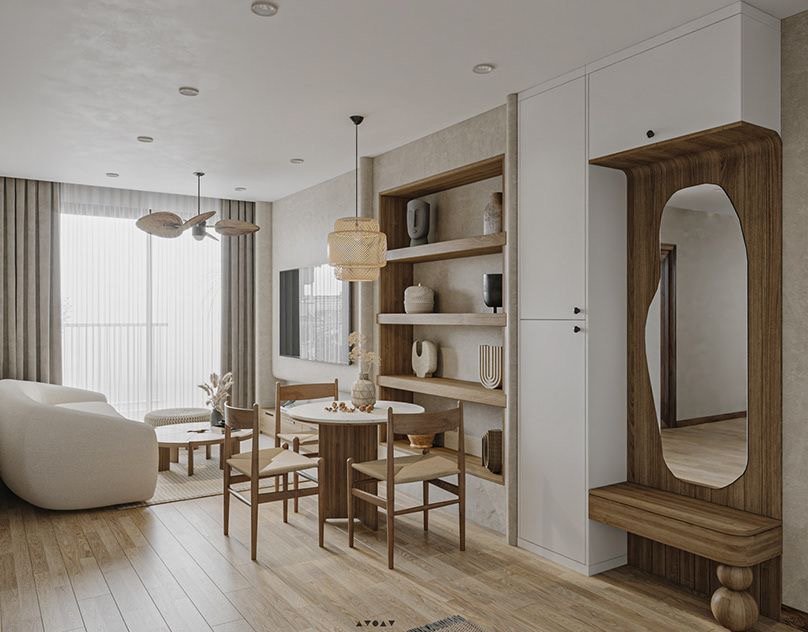
What are the key elements in Japandi Japanese-Nordic style interiors?
When exploring the design elements of Japandi style, it’s essential to consider the characteristics of both Japanese and Nordic styles. Both emphasize minimalism, reductionist design, and natural organic materials. However, they exhibit unique design details. Japandi style brings together the strengths of both, creating a distinctive interior design aesthetic. Here are some common focal points in Japandi interiors:
- Sustainable rattan and hemp
- Contrasting light and dark woods
- Incorporation of organic greenery
- Emphasis on clean lines
- Use of soft textures
- Fusion of East and West elements
- Dashari and storage solutions
Sustainable rattan and hemp
For those keeping an eye on international interior design trends, the emergence of rattan and bamboo furnishings in opulent homes across Europe and America is unmistakable. Additionally, jute carpets and curtains exude a distinctly Japanese aesthetic, presenting viable options within the realm of Japandi style décor. The key consideration when selecting these items is their longevity—preferring pieces that age gracefully. Therefore, embracing second-hand or antique furniture is highly encouraged, aligning with the goal of sustainable living and environmental conservation.
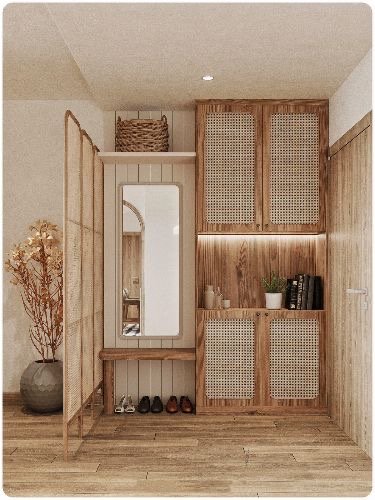
Contrasting light and dark woods
Despite spanning continents, wood remains a unifying element in both Nordic and Japanese design philosophies. Both embrace local sourcing, aiming to infuse indoor spaces with a natural ambiance. Yet, a glance at IKEA reveals a prevalent preference for lighter wood tones in Nordic design, while Japanese aesthetics encompass a wider range of wood hues.
In Japandi style, these influences converge, utilizing a mix of light and dark wood tones to craft contrasts and depth within spaces. The interplay between these tones creates a visual dynamism, elevating the ambiance and adding a sense of dimensionality to interiors.
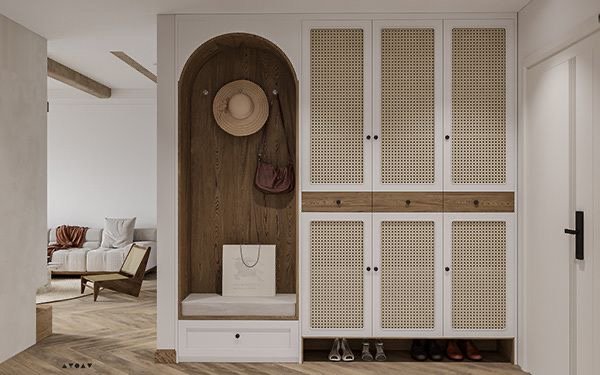
Incorporation of organic greenery
While Wabi-Sabi aesthetics commonly feature bonsai withered branches, reeds, bamboo, and moss as primary plant fixtures, Japandi decor embraces a selection of Nordic-style broadleaf plants and fresh blooms. Choices like the Alocasia, Ficus lyrata, Phalaenopsis orchids, Strelitzia, and Schefflera, among others, can be artfully combined with intermittent use of withered branches or bamboo, allowing individuals to curate their distinctive Japandi style within their homes.
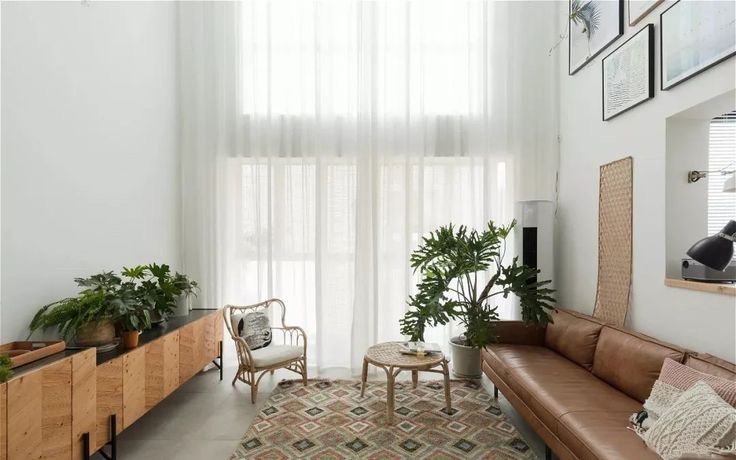
Emphasis on clean lines
In the dynamic world of interior design, Japandi style stands out as a unique fusion, blending the serene minimalism of Japanese aesthetics with the cozy functionality of Nordic design principles. It’s not a strict emulation of traditional Japanese settings, as it gracefully sidesteps the use of tatami mats or a complete reliance on wooden furniture. Instead, Japandi introduces a refreshing twist by incorporating soft, inviting fabric sofas, stylish armchairs, and sumptuous rugs.
This blend not only adds a layer of comfort but also softens the perceived austerity often associated with Japanese design. These thoughtful additions create spaces that offer a perfect retreat, a harmonious coexistence between the warmth of Nordic comfort and the understated elegance of Japanese simplicity. From the plush throw pillows to the expansive rugs, each element contributes to an inviting ambiance, demonstrating the seamless integration of cultures to craft spaces that are not just aesthetically pleasing but also inherently comforting and functional.
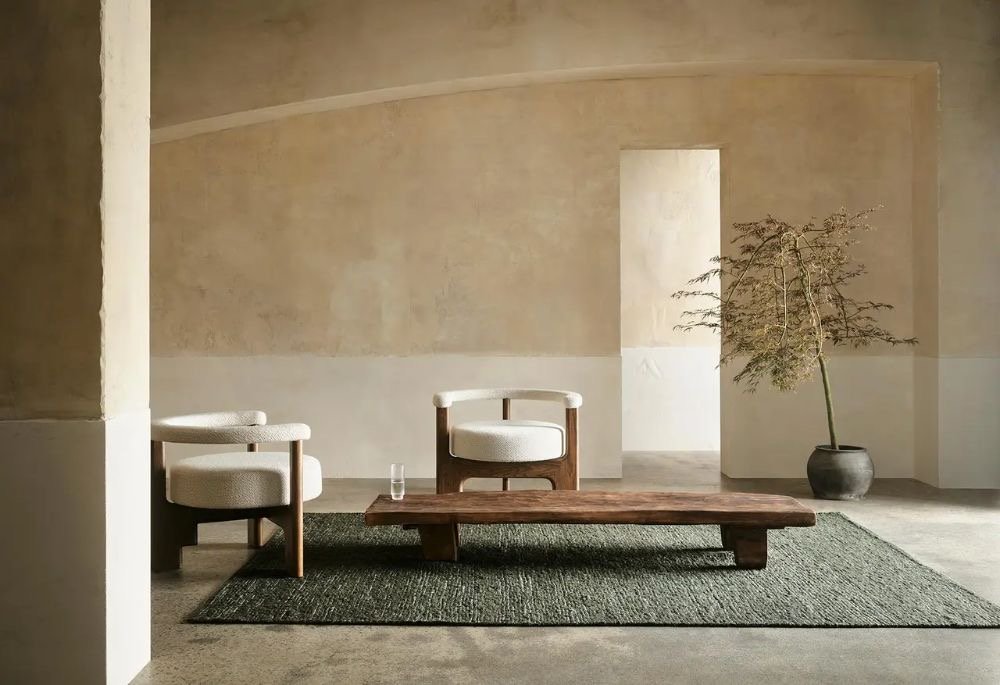
Fusion of East and West elements
Central to Japandi’s allure is its ability to seamlessly weave together diverse design elements from Wabi-Sabi and Nordic inspirations. Wabi-Sabi’s inclination towards embracing imperfections and simplicity finds expression through handcrafted pottery or delicately restored antique pieces that bring character and history into spaces adorned with Japandi decor. These elements contribute a sense of soulful beauty, inviting occupants to appreciate the passage of time and the stories embedded in each piece.
Conversely, the Nordic influence in Japandi is discernible through geometric wall art, sleek metal lighting fixtures, and a vibrant array of soft furnishings. These additions inject a contemporary flair and a burst of colors, adding a touch of modernity while balancing the serene sophistication of the overall ambiance. By blending these diverse design elements, Japandi presents a visual narrative that transcends cultural boundaries, offering spaces that harmoniously blend timeless elegance with contemporary vibrancy.
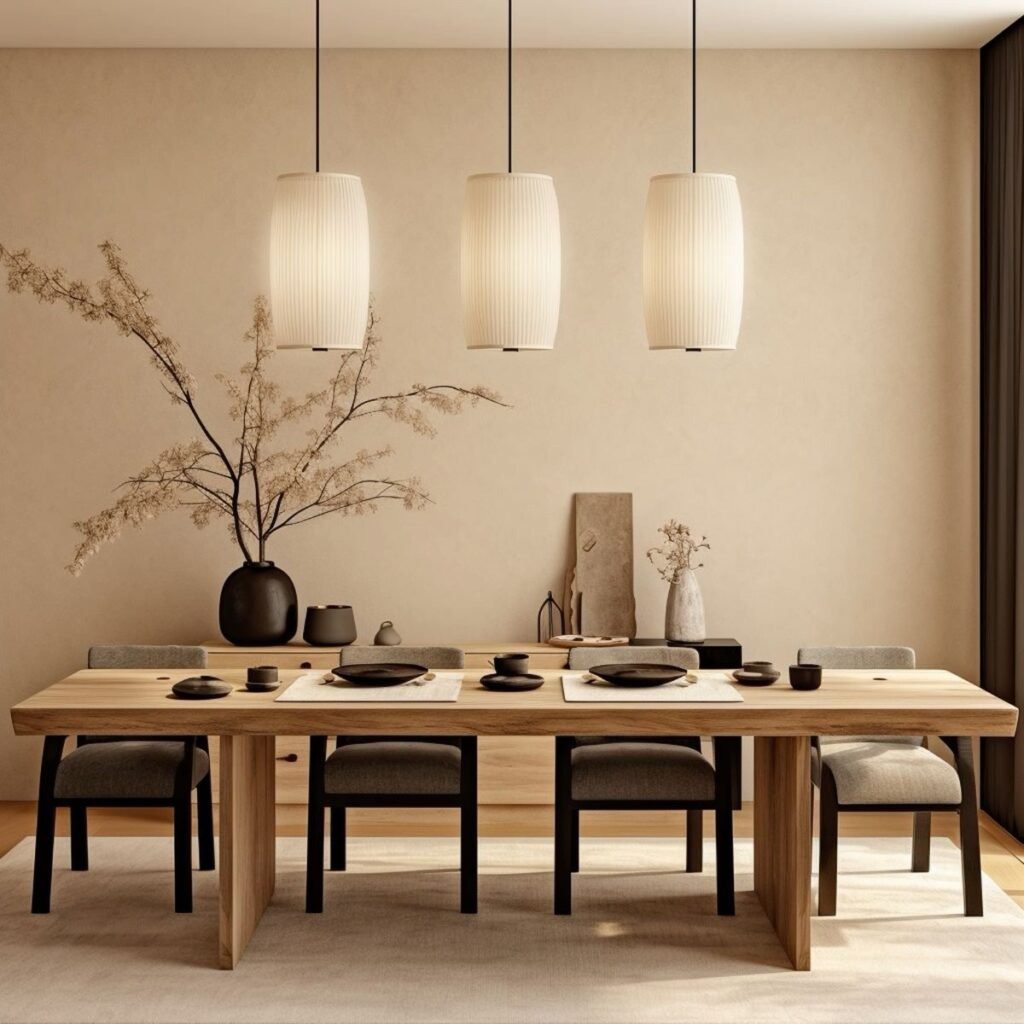
Dan-sha-ri and storage solutions
Dashari, rooted in the philosophy of Okido Yoga’s founder, Motobu Chōki, transcends mere Dashari—it embodies a lifestyle centered around the elimination of unnecessary possessions. This guiding principle finds resonance in the essence of Japandi style, where the art of living with less is elevated to an art form. It’s not about an absolute purge or living in a minimalistic void; rather, it’s a mindful curation of belongings, fostering an environment enriched by the presence of only what truly serves a purpose.
In the context of Japandi, dashari invites us to embrace a selective approach to possessions—a conscious choice to keep items that hold value and contribute to functionality. This intentional design philosophy advocates for storage solutions that seamlessly integrate into living spaces, offering ample room to organize essentials without cluttering the aesthetic appeal. It’s a balance between functionality and aesthetics, where what remains is purposeful and thoughtfully arranged, fostering an atmosphere of tranquility and order.

Exploring Japandi Style: Design Applications Across Diverse Spaces
In living rooms, the Japandi style often integrates cozy yet minimalist furniture, combining clean lines with comfortable seating arrangements. Here, neutral tones complemented by soft textiles create an inviting atmosphere conducive to relaxation and socializing. Dining areas embrace simplicity through sleek tables and chairs, emphasizing natural materials and muted colors, fostering an intimate setting for shared meals.
Kitchens resonate with the Japandi ethos by employing efficient storage solutions and clean countertops, utilizing wooden accents alongside modern appliances. Bedrooms under the influence of Japandi exude a calming aura, employing subdued hues, uncluttered spaces, and natural lighting, promoting restful environments. In bathrooms, this design philosophy translates into unadorned yet elegant fixtures, integrating warm wooden elements and subtle textures, offering a serene spa-like retreat within the home. Each space resonates with the understated elegance and functional sophistication intrinsic to the Japandi style.
Exploring Japandi Living Room Designs
Embracing the fusion of Japanese and Nordic influences, a key focus in Japandi-style living room décor centers around abundant natural light. It’s common to find Nordic-inspired wall art adorning the sofa’s backdrop while lush greenery or plush rugs enhance the space. Complemented by the earthy tones of the walls and the incorporation of Japanese-style rattan furniture, Japandi living rooms exude an inviting ambiance, inviting individuals to immerse themselves in the warm and cozy lifestyle experience.

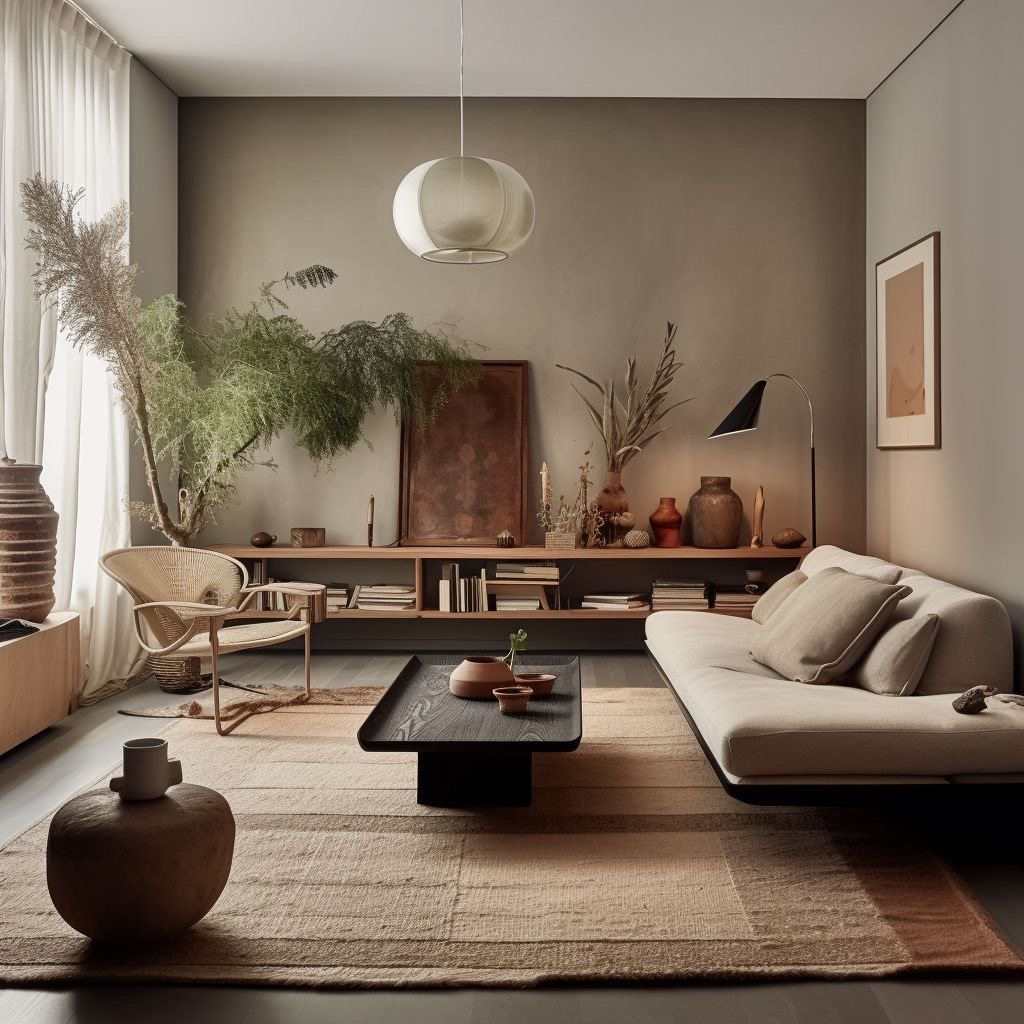

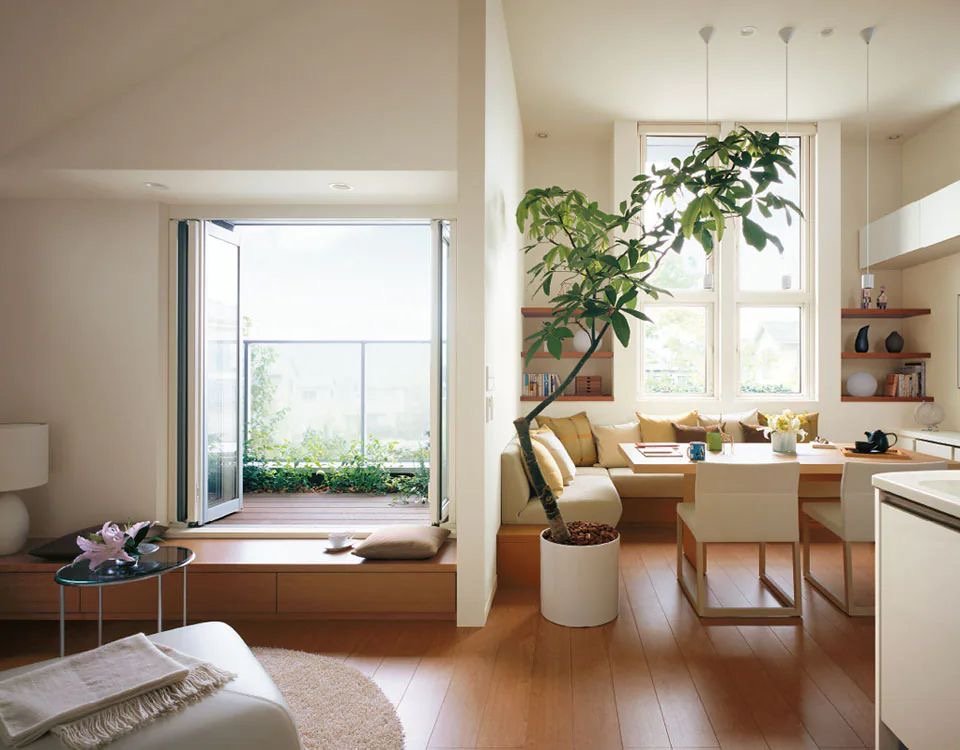
Exploring Japandi Dining and Kitchen Designs
In spaces adorned with the Japandi style, both dining areas and kitchens embrace minimalist design principles. They steer clear of intricate decorations, vivid colors, or contrasting materials, opting instead for expansive wooden tones, built-in appliances, and paper lantern pendant lights positioned above dining tables. This approach grants the space a practical yet minimalist aesthetic, fostering a warm and inviting ambiance in Japandi-inspired dining and kitchen areas, inspiring a more enjoyable cooking experience.
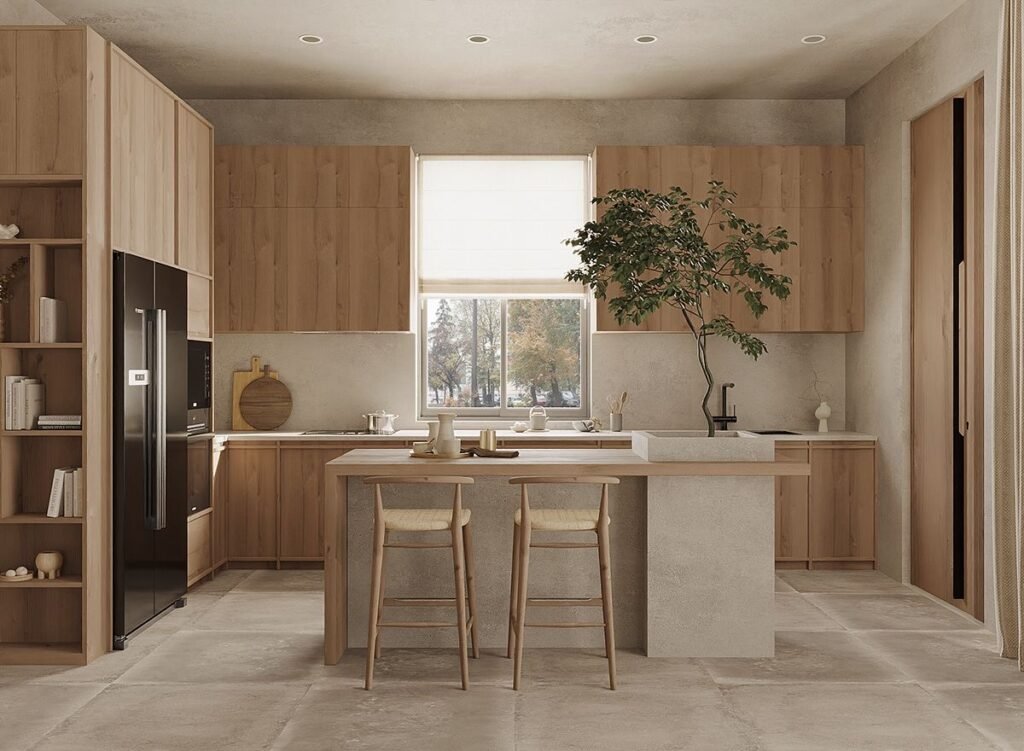
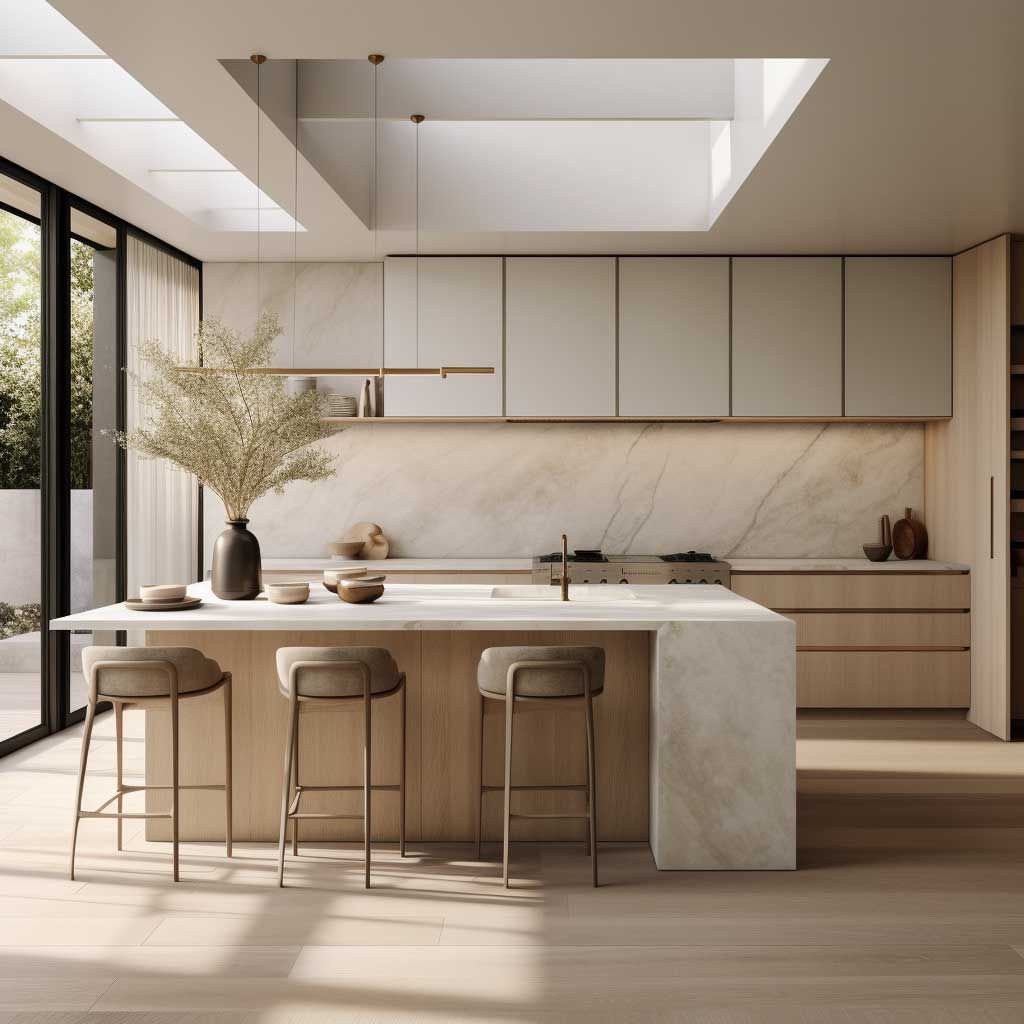
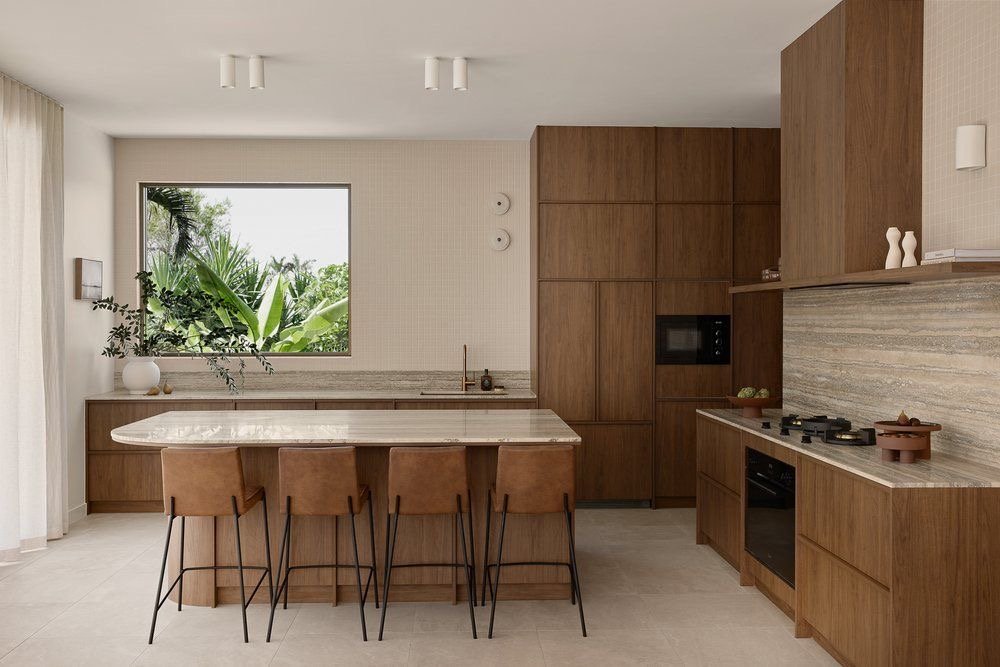
Exploring Japandi Bedroom Designs
For the serene comfort sought in Japandi-style interiors, the bedroom serves as a sanctuary for unwinding and relaxation. Typical Japandi room designs feature special coatings, complemented by understated headboard designs, well-considered lighting fixtures, and vanity mirrors. Additionally, a natural woven seat often finds its place at the foot of the bed, providing a tranquil ambiance akin to waking up in a villa abroad—a seamless blend of serenity and luxury.


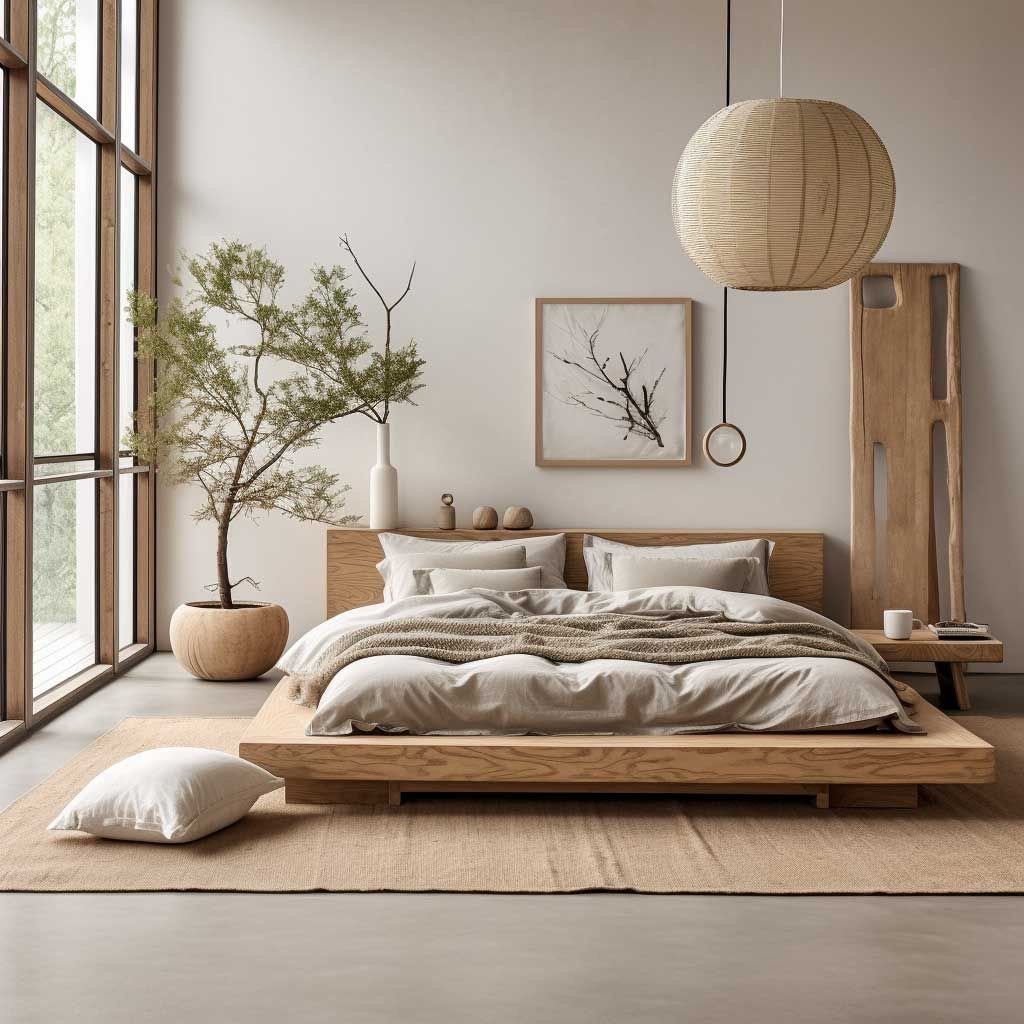
Exploring Japandi Bathroom Designs
Japandi-style bathrooms are tailored to fit varying space sizes, whether it’s in a compact apartment, a medium-sized home, or a luxurious estate. Plans accommodate options such as bathtubs, separate wet and dry shower spaces, and sometimes, dual sinks for simultaneous use by family members. Some Japandi-inspired bathrooms opt for wall niches instead of conventional shelves, reducing clutter by retaining only essential toiletries, embracing a minimalist lifestyle of decluttering and simplicity.
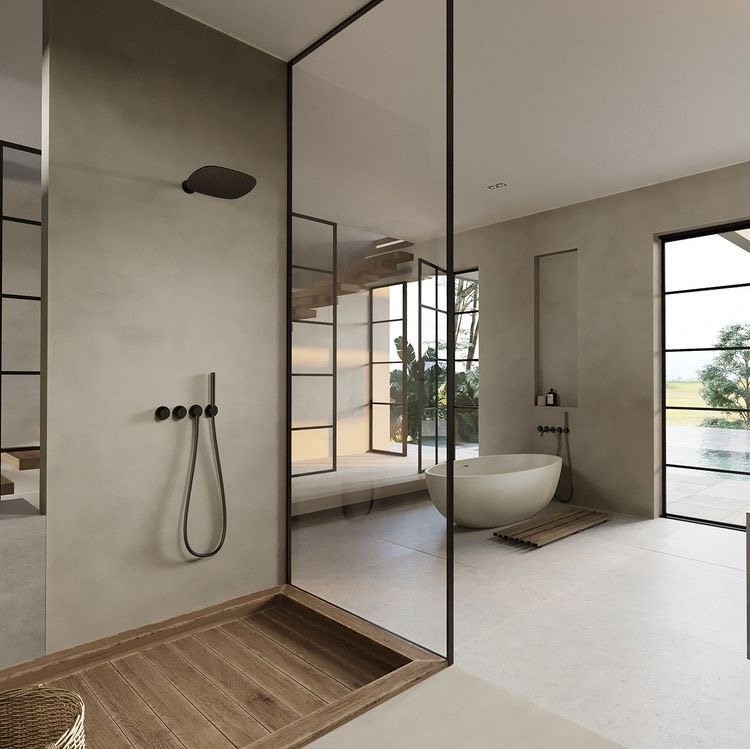
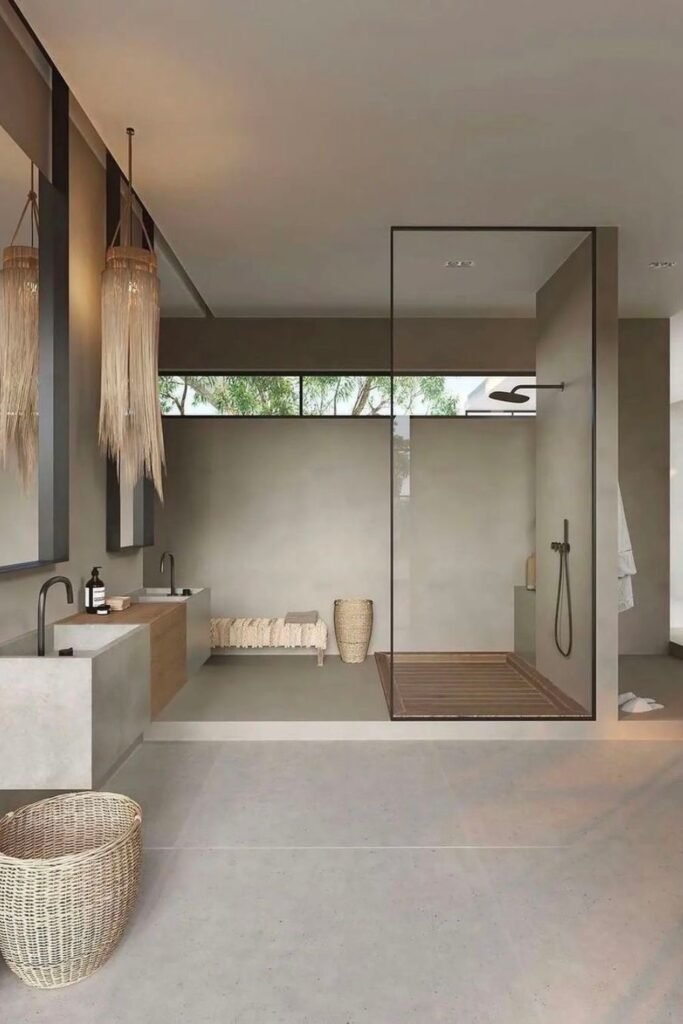
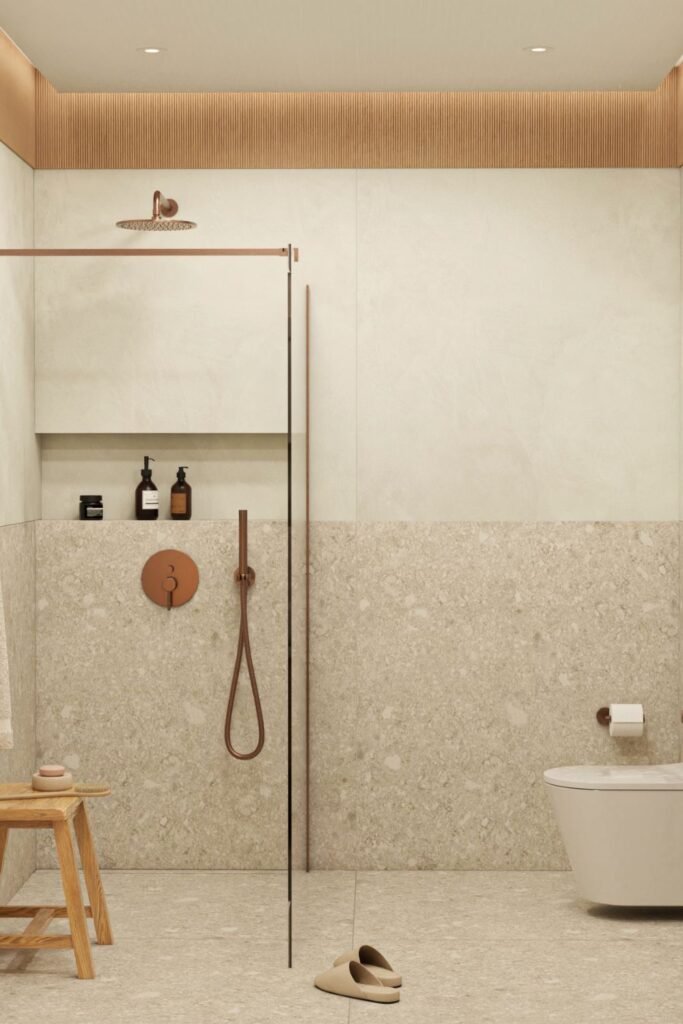
Conclusion
Delving into the world of Japandi, a harmonious fusion of Japanese and Nordic design, reveals a contemporary trend in interior aesthetics. Due to the amalgamation of two diverse styles, not every space inspired by Japandi adheres strictly to the mentioned characteristics. This style emphasizes a lifestyle-oriented approach and daily aesthetics over rigid design rules. Understanding the fundamental concept allows individuals to seamlessly curate their personalized rendition of the Japandi style, customized to suit their individual preferences and lifestyle.


